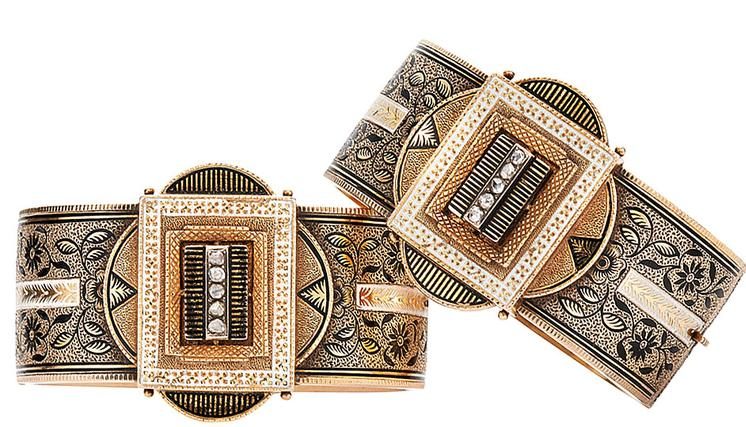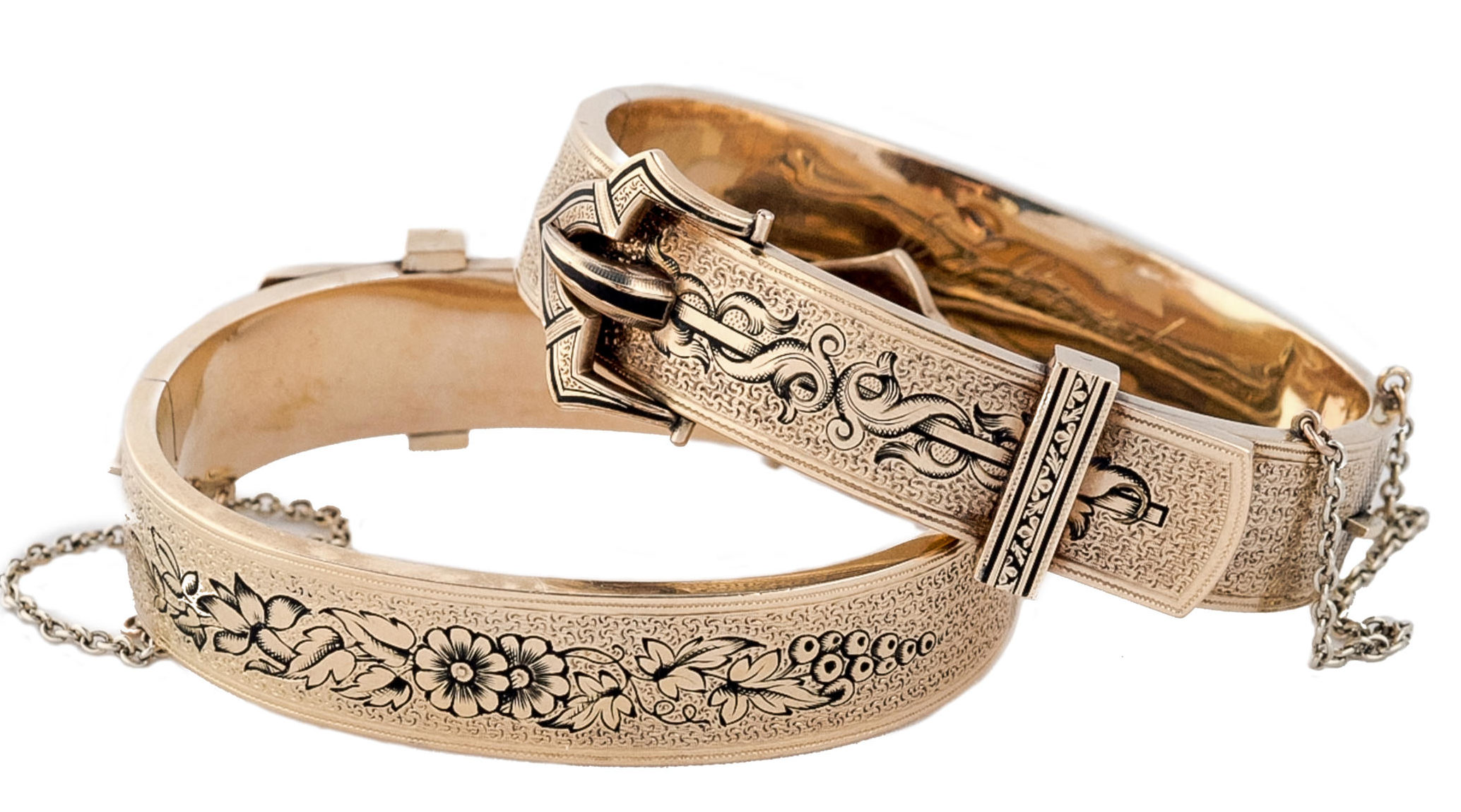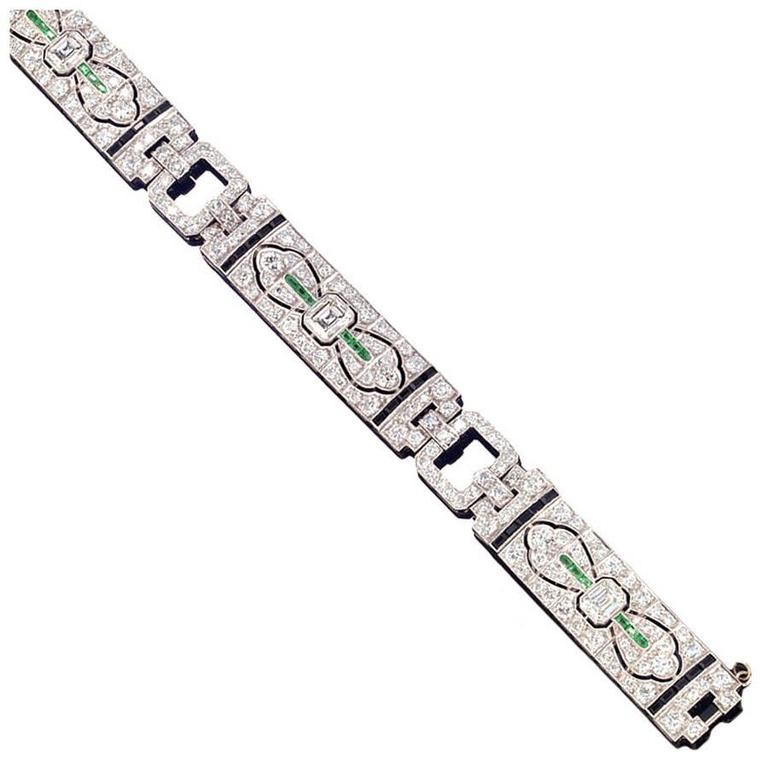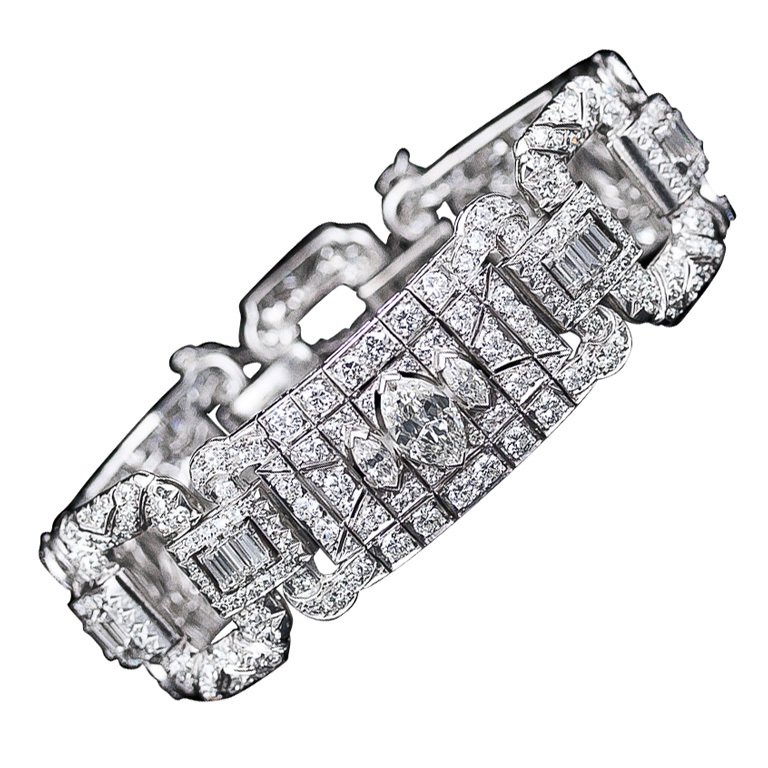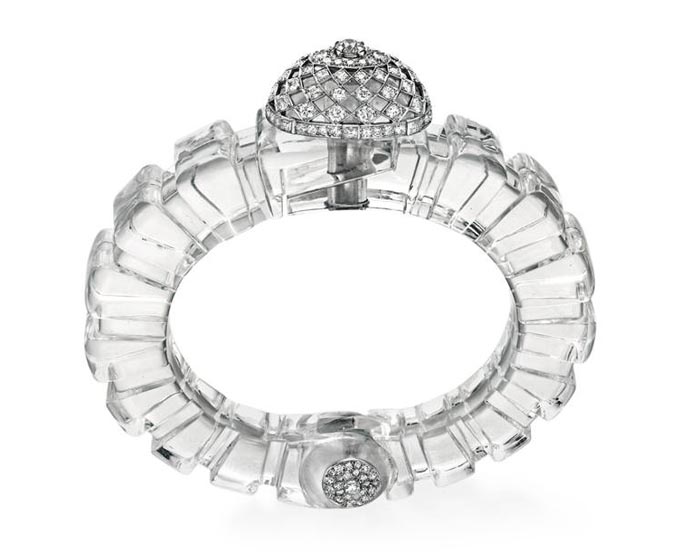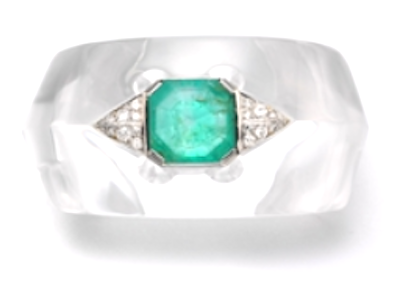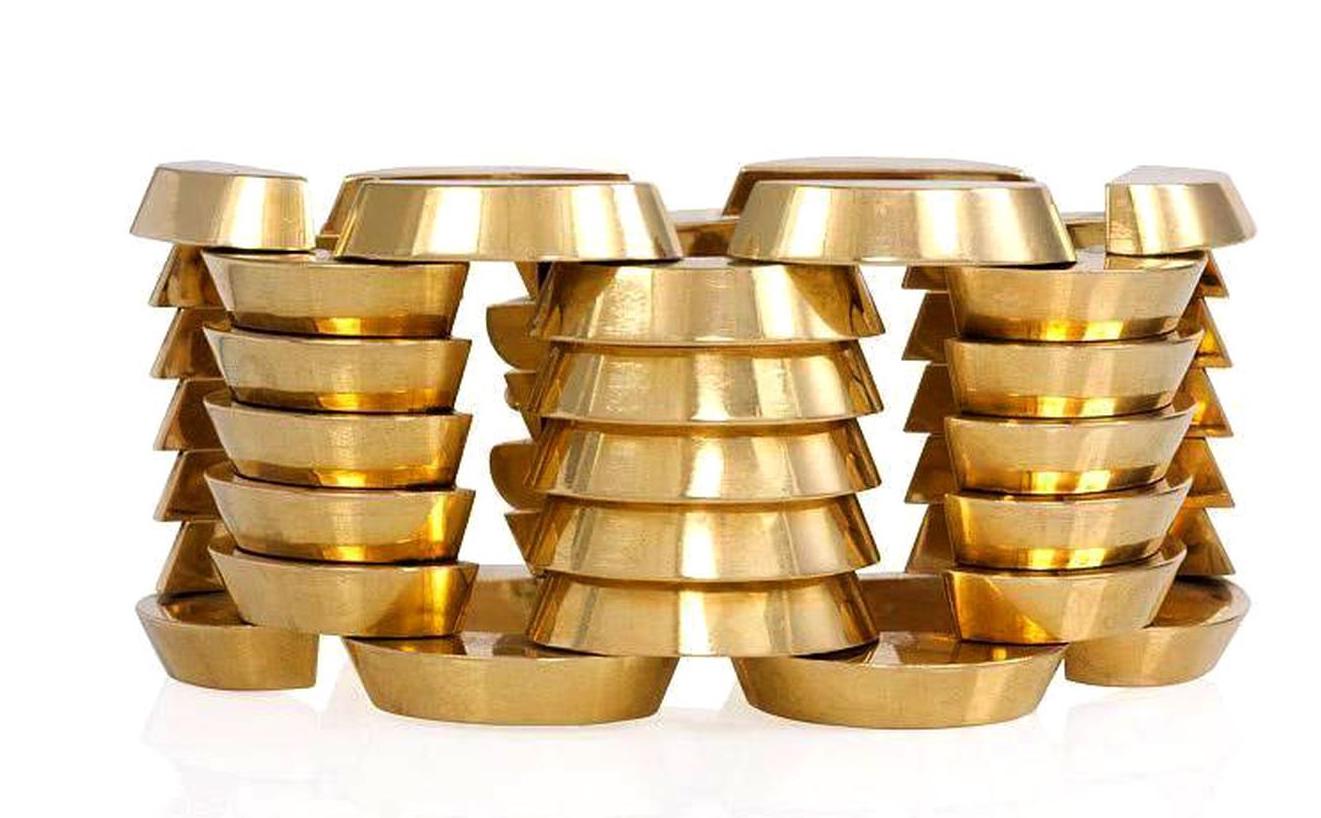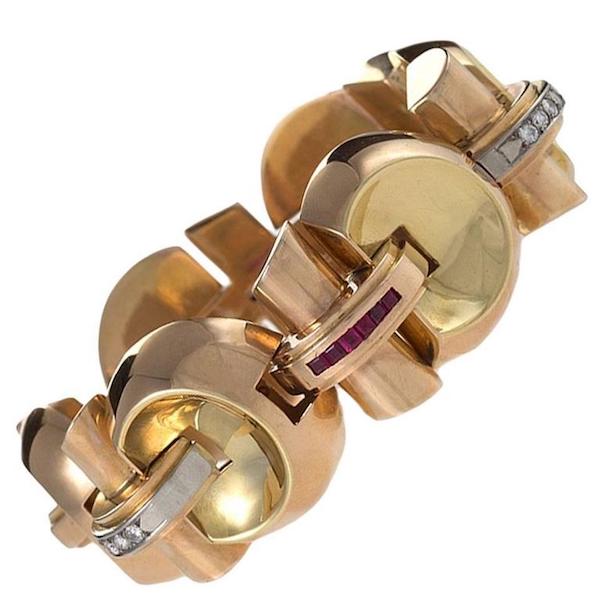The Allure of Antique, Retro and Vintage Bracelets
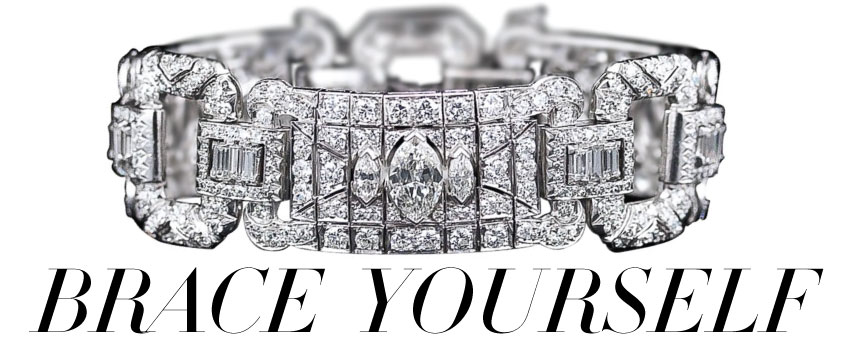
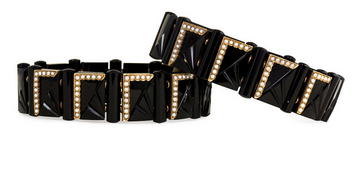
Dressing up the ear and gracing the neck with stand-out pieces proved to be the predominant trends on the red carpet and international ready-to-wear runways recently. But the streamlined elegance which set Priyanka Chopra apart from her peers at the 2017 Oscars, when she wore two Lorraine Schwartz wide platinum lavender and diamond bracelets on each wrist signals the presence of one of the major statements in antique, retro and vintage jewelry.

Priyanka Chopra Courtesy of INSTARimages/ PGI
This includes pairs of cuffs and bangles or a pile of wide to wider flexible bracelets from various time periods and in a range of styles, metals and motifs. These bracelets, from the mid 19th through the 20th century look relevant and feel as current with contemporary wardrobes as when were first designed. Yet, they are also some of the most highly coveted and collectible pieces among jewelry connoisseurs and investments that will never go out of style.
Here we take a look at some of the most popular looks that span the Victorian through vintage eras:
Doubling Up
The Victorian era with it’s Romantic, Grand and Aesthetic periods captured motifs that told a story about love, hope, and other symbolic messages of the day. Details included tracery in the earlier pieces; while later styles featured Etruscan revival granulation, wirework and well-placed filigree. Enameling also emphasized patterns and motifs, and some jewelry styles were set with seed pearls, turquoise and precious stones or were rendered in onyx backed by rose gold. Pairs of hinged bangles in various carat gold and widths with feminine engravings and highlights of black enamel were known as wedding bracelets. The groom would present one half of the pair to the bride upon engagement, and the other bracelet was given to and worn on the day of the wedding. These were often passed down to daughters and granddaughters. If you favor these styles and can find a pair that fit, then go for it! Many sets have been broken up at estate sales and they are becoming more of a challenge to find in pristine condition and desirable sizes. They look ultra chic when worn one on each wrist or stacked together on the same arm, with even a thinner diamond bangle in between.
- Exceptional pair of wide gold hinged cuffs with black and white enamel and tracery details at Fred Leighton
- Gold wedding bracelets with buckle detail at Maison Ray
Diamond Divas
The 1920s ushered in a time of change. Women were hiking up their skirts and dancing the night in sleek streamlined dresses. Fashion projected an ease and freedom and fewer constraints than in previous decades. The jazz and machine age, new concepts in fine art and architecture such as cubism and futurism with its geometric forms and angular lines all influenced the jewelry which became part of the Art Deco Movement. The bracelets of this time were highly desirable since they first came into style and still are. These elaborately constructed jewels were first shown with intricate piercing work in all white platinum settings with an arrangement of diamonds: baguettes, marquises, rounds, half circles and early emerald cuts surrounded by smaller diamonds. Chaumet, Cartier and other French jewelers of the day created versions that went from wide to wider. Many were geometric with additional details such as buckle closures but most lay flat on the wrist. As time went on these bracelets also took on the painterly feeling of Asian floral motifs, Egyptian scarabs and Pharaos, in vividly colored gemstones and diamonds. The perfect addition to a modern arm party, Art Deco wide flexible bracelets are very much in demand today.
- Flexible onyx, emerald and diamond Art Deco bracelet at Sheila Goldfinger
- Wide diamond Art Deco Bracelet at Lang Antiques
New Materials
Jewelry designers such as Suzanne Belperron, Cartier and David Webb all created versions of rock crystal and diamond bangles. Belperron who never signed her pieces, but instead said, “my style is my signature”, worked in unexpected materials or rendered those materials in surprising and irreverent and inventive ways. Her rock crystal pieces are among the most collectible jewels of the Art Deco period. Before striking out on her own, she worked for Rene Bovin, the company which Jeanne Bovin, Rene’s wife, took over after his death in 1917. Jeanne employed other female designers and in collaboration with them also created some striking rock crystal and gemstone cuffs.
But, perhaps the most famous Art Deco rock crystal, platinum and diamond cuffs were designed by Cartier in 1929. They belonged to silver screen star Gloria Swanson. She wore the mismatched cuffs on one or both wrists in the film Sunset Boulevard, in many publicity stills for the film, and also to an Academy Awards party for her nomination for Best Actress for the same movie, only to find out that she had not won the award. But the bracelets and Swanson’s epic performance lives on in our collective consciousness. David Webb worked in rock crystal in the mid-20th century. His cuff bracelets ranged from geometric to sculptural and often incorporated onyx and diamonds.
- Art Deco diamond and rock crystal bangle by Cartier sold for $377,000 at Christie’s New York in 2013.
- An Art Deco Emerald, Diamond AND Rock Crystal Bracelet, BY Suzanne Belperron sold at Christie’s New York for $43,000 in 2008
Bringing Home The Gold
Due to World War II, styles changed from the white-on-white platinum and diamond looks or those that conjured up exotic colors, flowers and scenes of far away lands. Platinum was restricted for use in the war; therefore, rose and yellow gold took over as the metals of choice. Jewelers of the day drew inspiration from the treads of assembly machines, as well as the treads of wartime tanks. These provided concepts for wide bracelets, which featured geometrical and oversized links, as well as those that were accented with rubies and sapphires, or synthetic versions of both and small diamonds. Some of the styles from the time period also featured large gemstones of citrines, aquamarines and amethysts. When materials were scarce and spirits needed lifting, designers realized that women entering the workforce needed a dose of glamour, similar to what they were seeing on Hollywood stars and offered up various styles to accessorize ultra structured work uniforms.
- Kenshire retro machine age bracelet, circ 1945
- A two tone gold retro bracelet with gemstone accents at Macklowe Gallery
Talk about the resurgence certain styles of bracelet and you can’t help but mention Elsa Peretti’s 1974 sterling silver bone cuff for Tiffany & Co. Celebrated icons of the time, including Diana Vreeland, Liza Minnelli and Sophia Loren wore theirs in various photos and to numerous events.
Elsa Peretti understood the changing roles of women in the seventies. With the feminist movement came a new confidence in all aspects of their livess. Peretti’s pieces spoke to the powerful woman who could dance all night long at Studio 54 and work their way up the corporate ladder, breaking down barriers during the day. Elsa Peretti’s jewelry was also an alternative to the diamond-encrusted pieces that could only be worn for evening. The Bone cuff was perhaps Peretti’s most celebrated design. It still graces the wrists of trends-setting actresses such as Rosamund Pike, Rachel Weisz and Naomi Watts. These leading ladies have worn this cuff to various red carpet events in recent years, proof that Peretti’s original 70’s jewelry pieces have as much modern and timely appeal as when she first designed them.
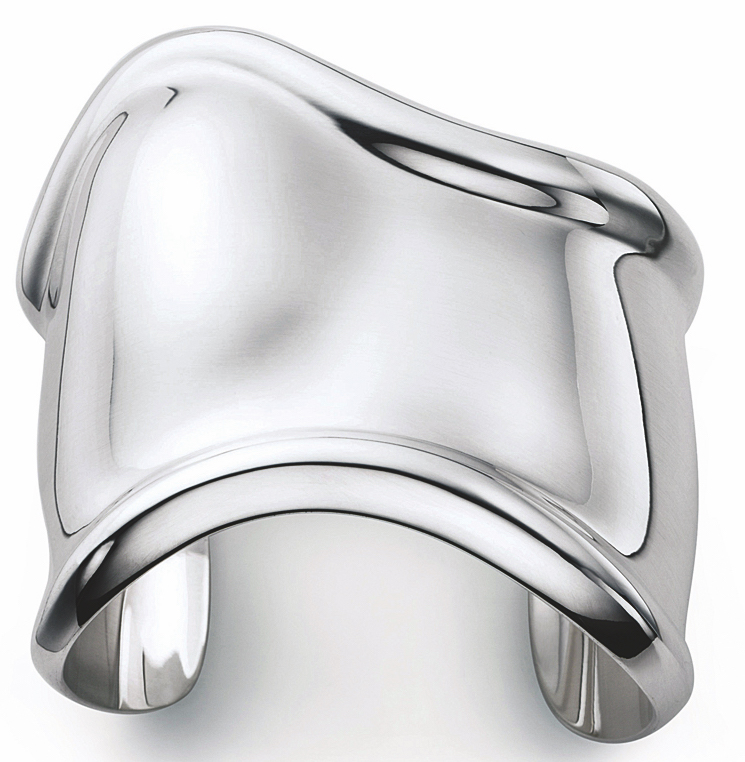
Elsa Peretti Sterling Silver Bone Cuff
These period styles offer a sophistication and can add dose of personalization to your look. In addition, pieces from the jewelers who created Art Deco through mid-century styles can be found at auction, among reputable dealers as well as shops that specialize in signed pieces including Boucheron, Van Cleef & Arpels, Cartier, David Webb and Verdura, to name just a few. If a time period or style intrigues you or if you are beginning to collect, it’s important to be armed with questions about authenticity, provenance, condition and rarity before you shop.

